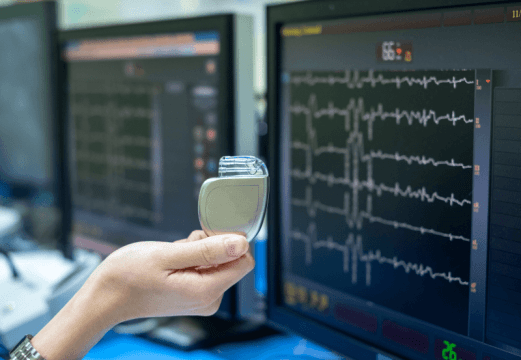Transcatheter aortic valve replacement (TAVR) has shown remarkable benefits and continues to advance towards lower-risk patients and younger ages. However, one of its limitations lies in the demand for a permanent pacemaker (PPM), which during TAVR early stages with self-expanding valves reached 30%.

Uncertainty persists regarding the evolution of patients undergoing PPM implantation after TAVR, as several studies have shown an increase in mortality and readmissions due to heart failure, while other analyses have presented opposing results.
Within the framework of an analysis of 3211 patients registered in the NEOPRO (Multicenter Comparison between Acurate NEO and Evolut PRO Transcatheter Heart Valves) and NEOPRO-2 (Multicenter Comparison between ACURATE NEO 2 and Evolut PRO/PRO+ Transcatheter Heart Valves) studies, researchers took a closer look at 362 individuals (11.3%).
The average age was 81 years; 29% of patients had diabetes, 27.3% had atrial fibrillation, 9.2% had a prior stroke, and 16.6% had chronic obstructive pulmonary disease (COPD). Ejection fraction was 57%. There were no significant differences in aortic valve area, annulus diameter, annulus eccentricity, or calcification.
In the group that required PPM there were more men; patients had a higher incidence of diabetes, myocardial revascularization surgery, complete right bundle branch block (CRBBB), lower glomerular filtration rate, higher STS mortality score, and an ejection fraction below 40%. Additionally, the diameter-derived perimeter index was higher in those who received PPM.
Read also: Long Term Outcomes after Complex PCI According to Operator Experience and Use of IVUS.
Patients requiring PPM received larger diameter valves, underwent fewer predilation procedures (58.8% vs. 67.6%; P=0.001), and required greater repositioning. Additionally, Evolut PRO/PRO+ valves were implanted deeper compared with Acurate NEO and Acurate NEO 2 (5.8 ± 2.7 mm vs. 5.0 ± 2.6 mm; p <0.001). There were no differences in technical success, but hospitalization duration was longer in the PPM group. Approximately only 15% of valves were implanted with a diameter less than 3 mm.
At 30 days, there were no significant differences in mortality, but there were more hospital admissions in the PPM group.
After one year of follow-up, a higher mortality rate was evident in the PPM group (16.9% vs. 10.8%; hazard ratio [HR]: 1.61; 95% confidence interval [CI]: 1.12-2.31; p = 0.009), especially among those with an ejection fraction below 40% (40.7% vs. 14.6%; adjusted HR: 3.67; 95% CI: 1.37-9.83; p = 0.01), as well as a higher rate of rehospitalization. There were no significant differences when the ejection fraction exceeded 40%.
Read also: Moderate Aortic Stenosis: We Should Start Assessing It More Thoroughly.
Independent predictors for the need for PPM were the STS mortality score, CRBBB, and valve implantation depth.
Conclusion
The demand for PPM was 11.3% and was associated with higher one-year mortality, particularly in patients with an ejection fraction below 40%. Complete right bundle branch block and implantation depth emerge as independent predictors of need for PPM.

Dr. Carlos Fava.
Member of the Editorial board of SOLACI.org.
Original Title: Incidence, Predictors, and Prognostic Impact of New Permanent Pacemaker Implantation After TAVR With Self-Expanding Valves.
Reference: Matteo Pagnesi, et al. J Am Coll Cardiol Intv 2023. Article in Press.
Subscribe to our weekly newsletter
Get the latest scientific articles on interventional cardiology





